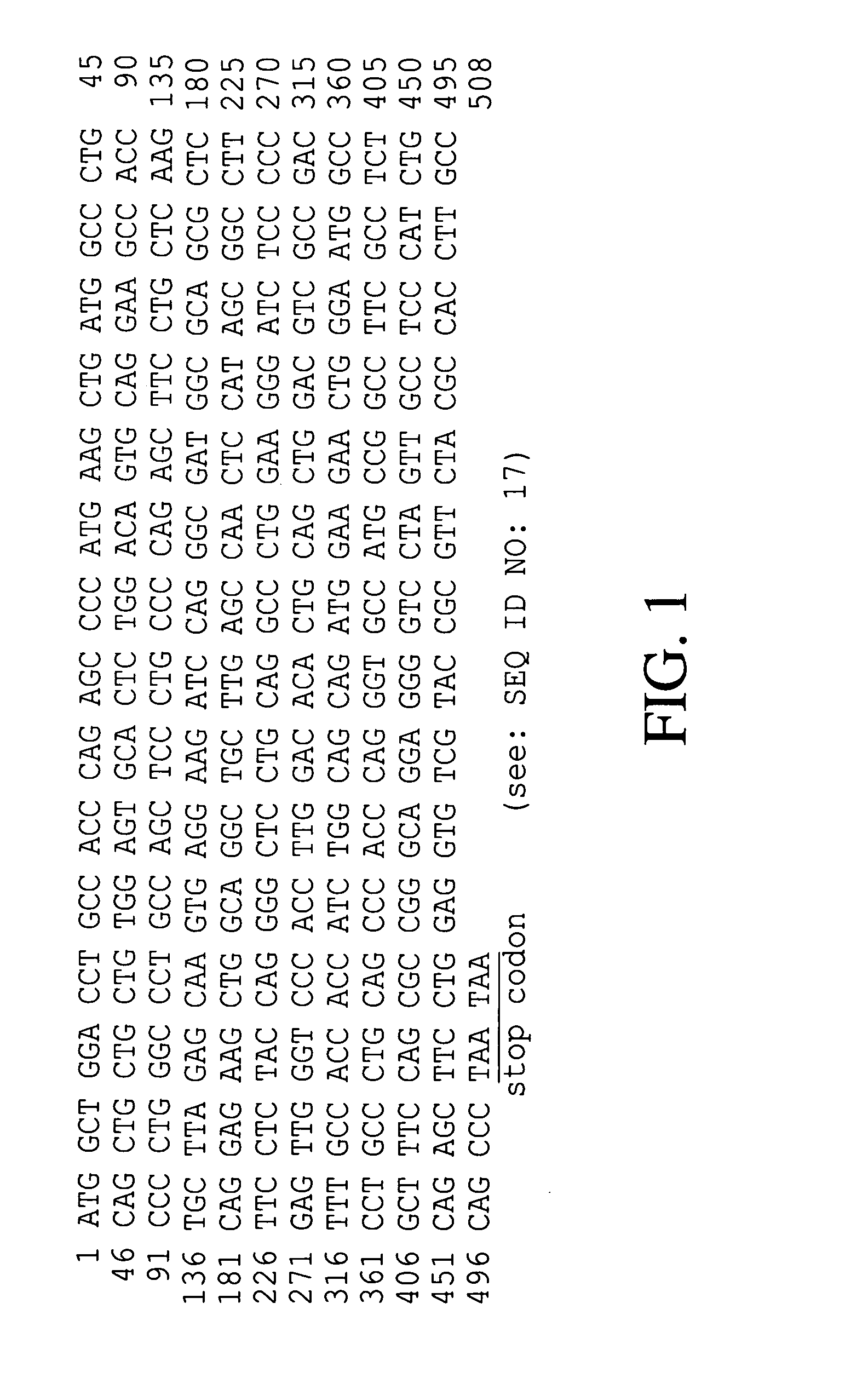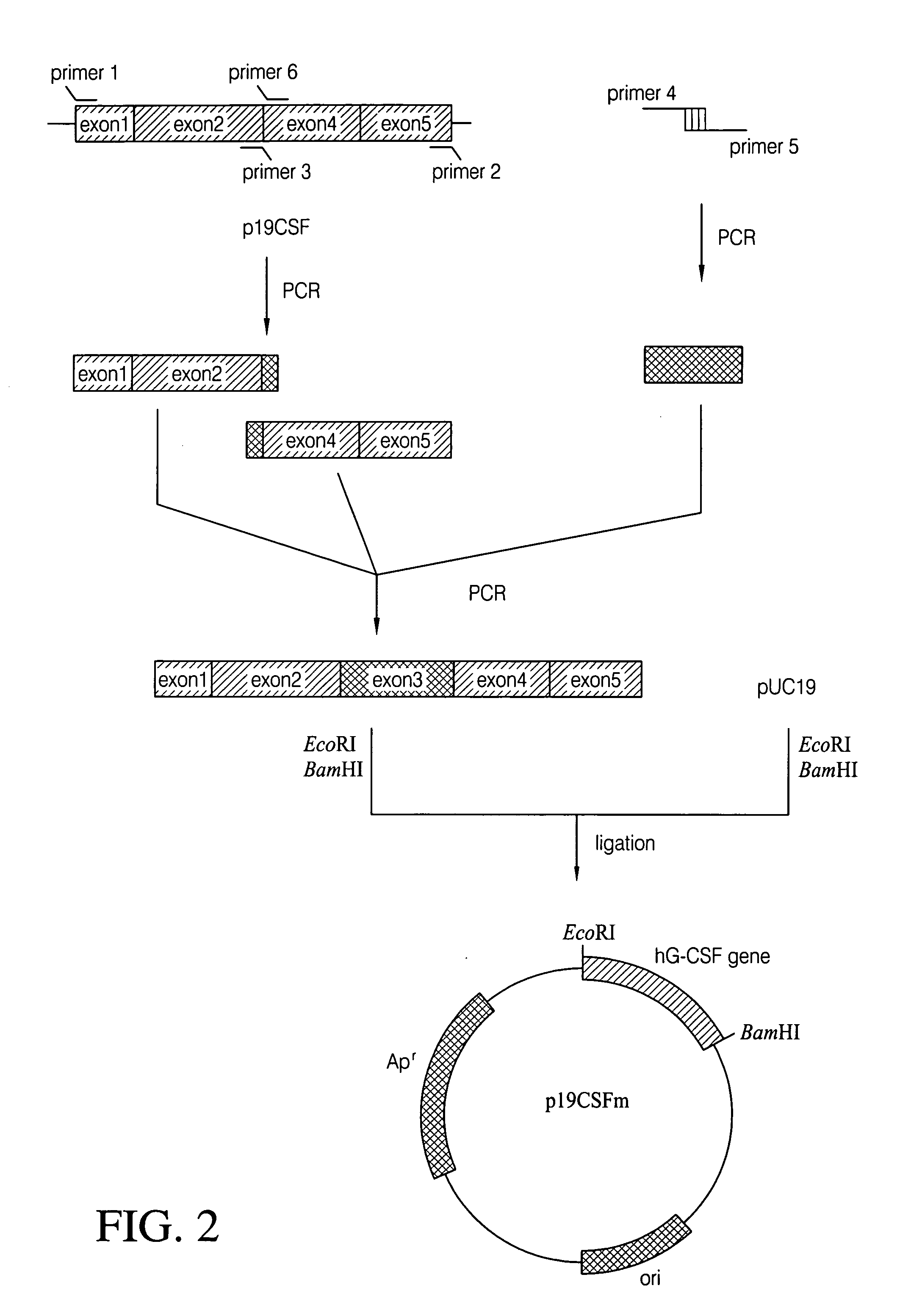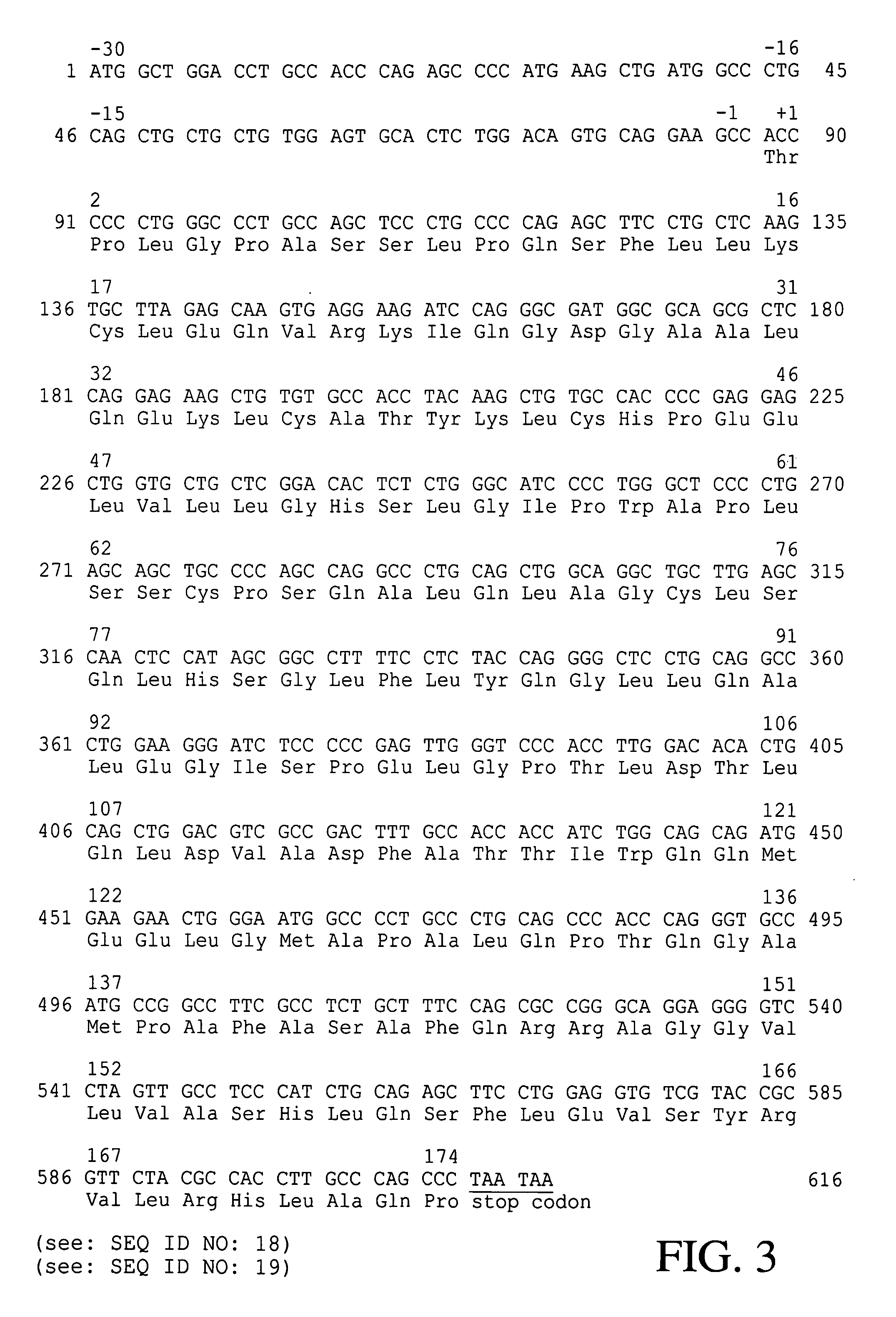Escherichia coli strain secreting human granulocyte colony stimulating factor (G-CSF)
a technology of granulocyte colony and stimulating factor, which is applied in the field of escherichia coli /i>strain secreting human granulocyte colony stimulating factor (g-csf), can solve the problems of many disadvantages in terms of protein yield or production cost, severe side effects, and method limitations, and achieve the effect of facilitating the secretion of hg-cs
- Summary
- Abstract
- Description
- Claims
- Application Information
AI Technical Summary
Benefits of technology
Problems solved by technology
Method used
Image
Examples
example 1
Preparation of cDNA for Human Granulocyte-Colony Stimulating Factor(hG-CSF)
[0036]To isolate hG-CSF gene, hG-CSF cDNA was prepared by PCR amplification of a human breast carcinoma cDNA library. Nucleotide sequence of the hG-CSF gene was retrieved in the GenBank, and then, primer 1: 5′-GCGAATTCATGGCTGGACCTGCCACCCAG-3′ (SEQ ID NO: 2) and primer 2: 5′-GCGGATCCTTATTAGGGCTGGGCAAGGTGGCG-3′ (SEQ ID NO: 3) were synthesized, respectively. For the convenience of cloning of PCR product, EcoRI and BamHI restriction sites were introduced at primer 1 and primer 2, respectively. Then, PCR was performed by, employing High Fidelity PCR System (Boehringer Mannheim Co., Germany), under following condition: one cycle of denaturation at 94° C. for 7 min; 30 cycles of denaturation at 94° C. for 1 min, annealing at 50° C. for 1 min, and extension at 72° C. for 1 min; and, one cycle of extension at 72° C. for 7 min. DNA molecules obtained by the PCR were subjected to agarose gel electrophoresis to isolate D...
example 2
Construction of the Recombinant Plasmid, pEDCSFm
[0039]In order to get hG-CSF protein expressed from the hG-CSF gene obtained in Example 1, the mature hG-CSF gene was constructed by removing signal sequence from p19CSFm (see: FIG. 5). To clone the mature hG-CSF gene, Primer 7: 5′-GCGAATTCATATGACCCCCCTGGGCCCTGCCAGC-3′ (SEQ ID NO: 8) was prepared. Employing primer 2 and primer 7, p19CSFm was subjected to PCR amplification, and the amplified DNA molecules were digested with two restriction enzymes, NdeI and BamHI. The resultant DNA fragment was joined into the T7 promoter-containing plasmid pET21c (Novagen Co., U.S.A.) digested with NdeI and BamHI. After transformation of E. coli XL1-Blue with the ligated product by electroporation, the transformants were selected on the LB agar medium containing ampicillin (50 μg / l) and the recombinant plasmid, pEDCSFm was obtained therefrom (see: FIG. 4).
[0040]For production of hG-CSF protein in E. coli, the recombinant plasmid pEDCSFm was introduced ...
example 3
Construction of the Recombinant Plasmid, pEDCSFmII
[0041]Based on the report by Devlin et al. that high G+C content in N-terminal portion of hG-CSF gene has inhibitory effect on transcription and translation of the gene (see: Devlin et al., Gene, 65:13–22 (1988)), primer 8: 5′-GCGAATTCATATGACTCCGTTAGGTCCAGCCAGC-3′ (SEQ ID NO: 9) was prepared to obtain the gene which has lower G+C content such that the gene can be transcribed and translated efficiently in E. coli.
[0042]Plasmid p19CSFm was amplified by PCR using primer 8 and primer 2. The resulting PCR product was digested with NdeI and BamHI, cloned into the same site of pET21c, and then transformed into E. coli XL1-Blue. The transformed E. coli XL1-Blue were selected on the LB agar medium containing ampicillin(50 μg / l) and the recombinant plasmid pEDCSFmII was obtained therefrom(see: FIG. 6). Comparing with the sequence of the fragment in pEDCSFm, the nucleotide sequence of the fragment in pEDCSFmII was found to be identical in N-te...
PUM
| Property | Measurement | Unit |
|---|---|---|
| Time | aaaaa | aaaaa |
| Brinell hardness | aaaaa | aaaaa |
| Purity | aaaaa | aaaaa |
Abstract
Description
Claims
Application Information
 Login to View More
Login to View More - R&D
- Intellectual Property
- Life Sciences
- Materials
- Tech Scout
- Unparalleled Data Quality
- Higher Quality Content
- 60% Fewer Hallucinations
Browse by: Latest US Patents, China's latest patents, Technical Efficacy Thesaurus, Application Domain, Technology Topic, Popular Technical Reports.
© 2025 PatSnap. All rights reserved.Legal|Privacy policy|Modern Slavery Act Transparency Statement|Sitemap|About US| Contact US: help@patsnap.com



